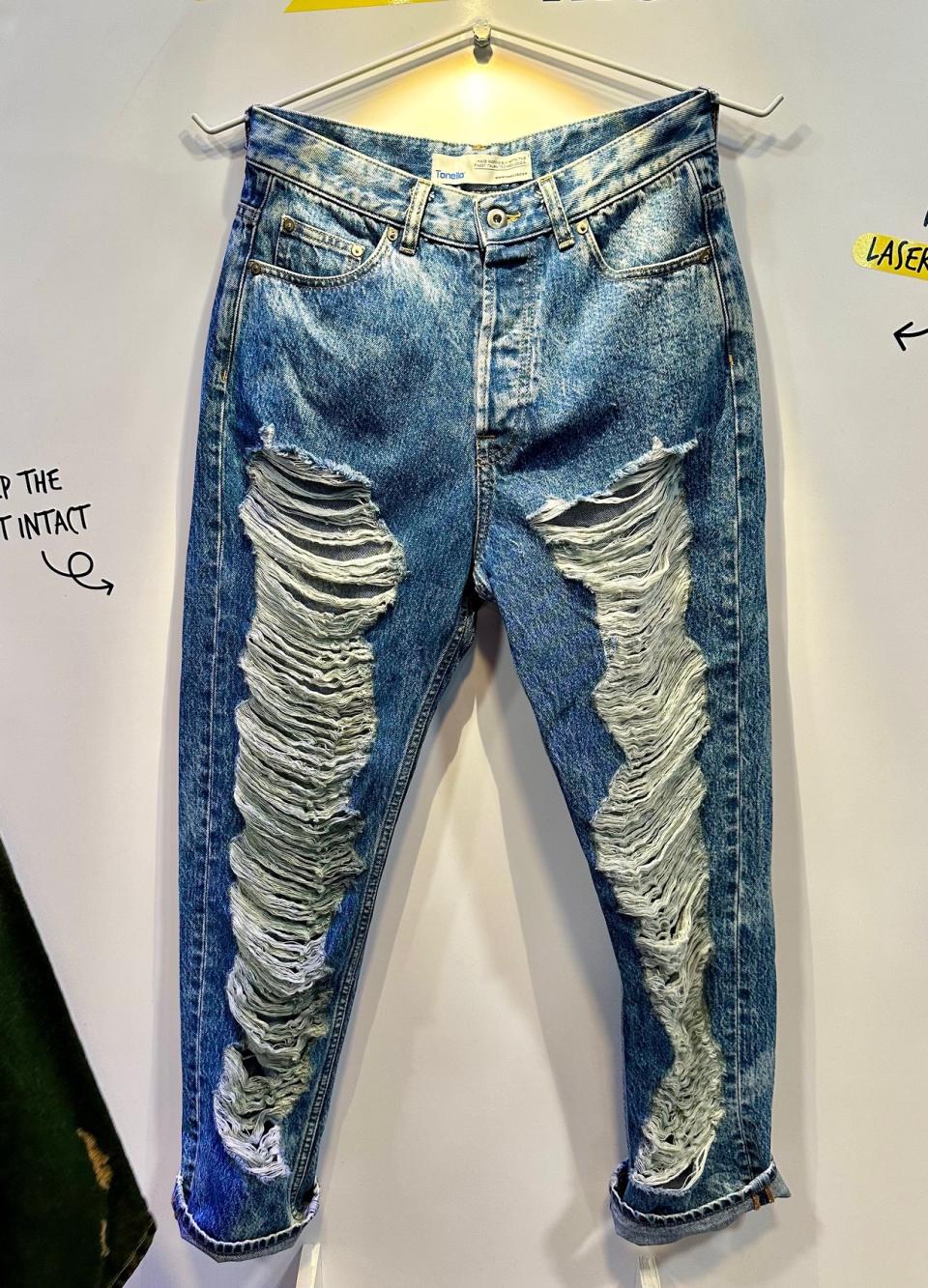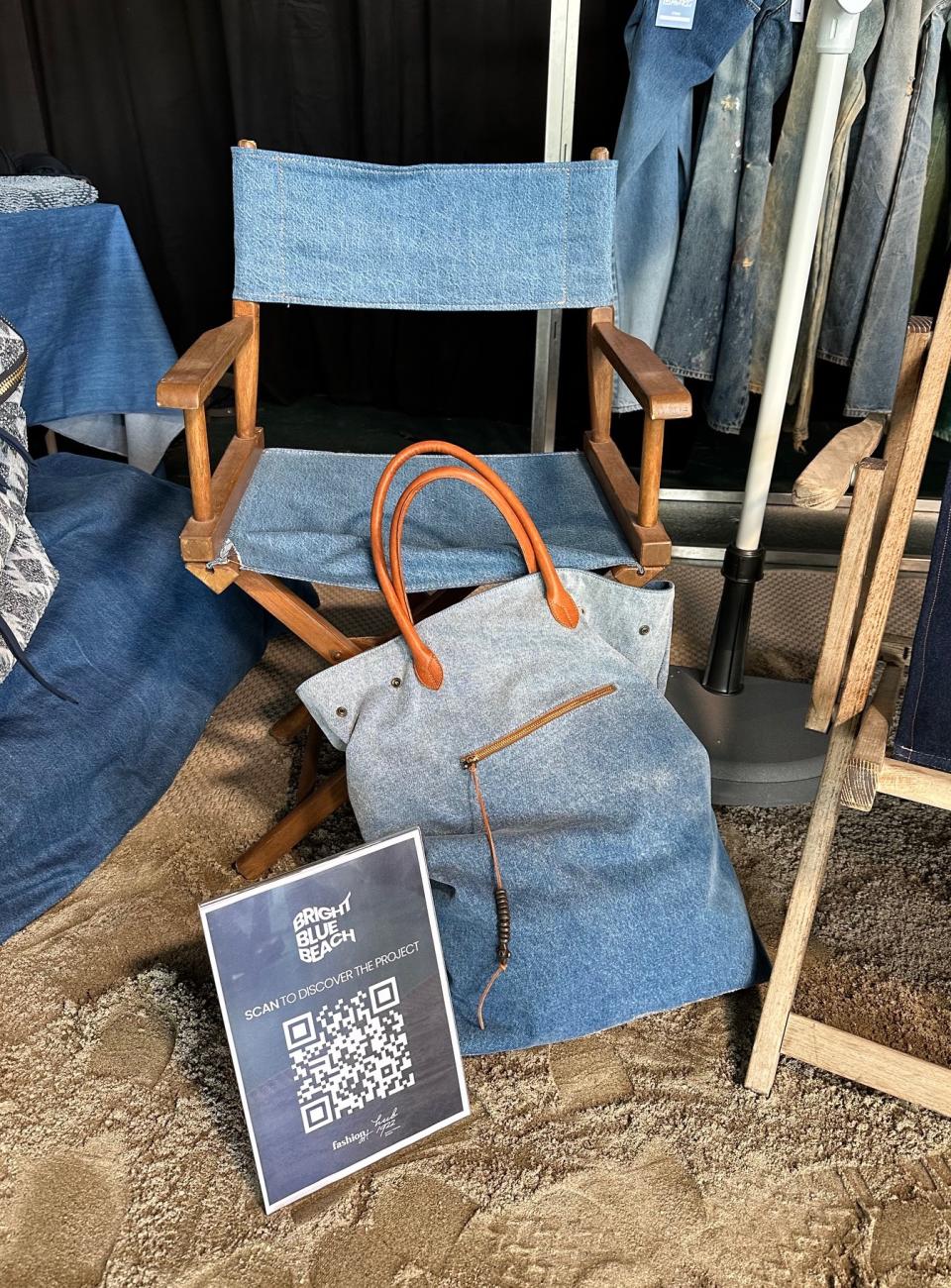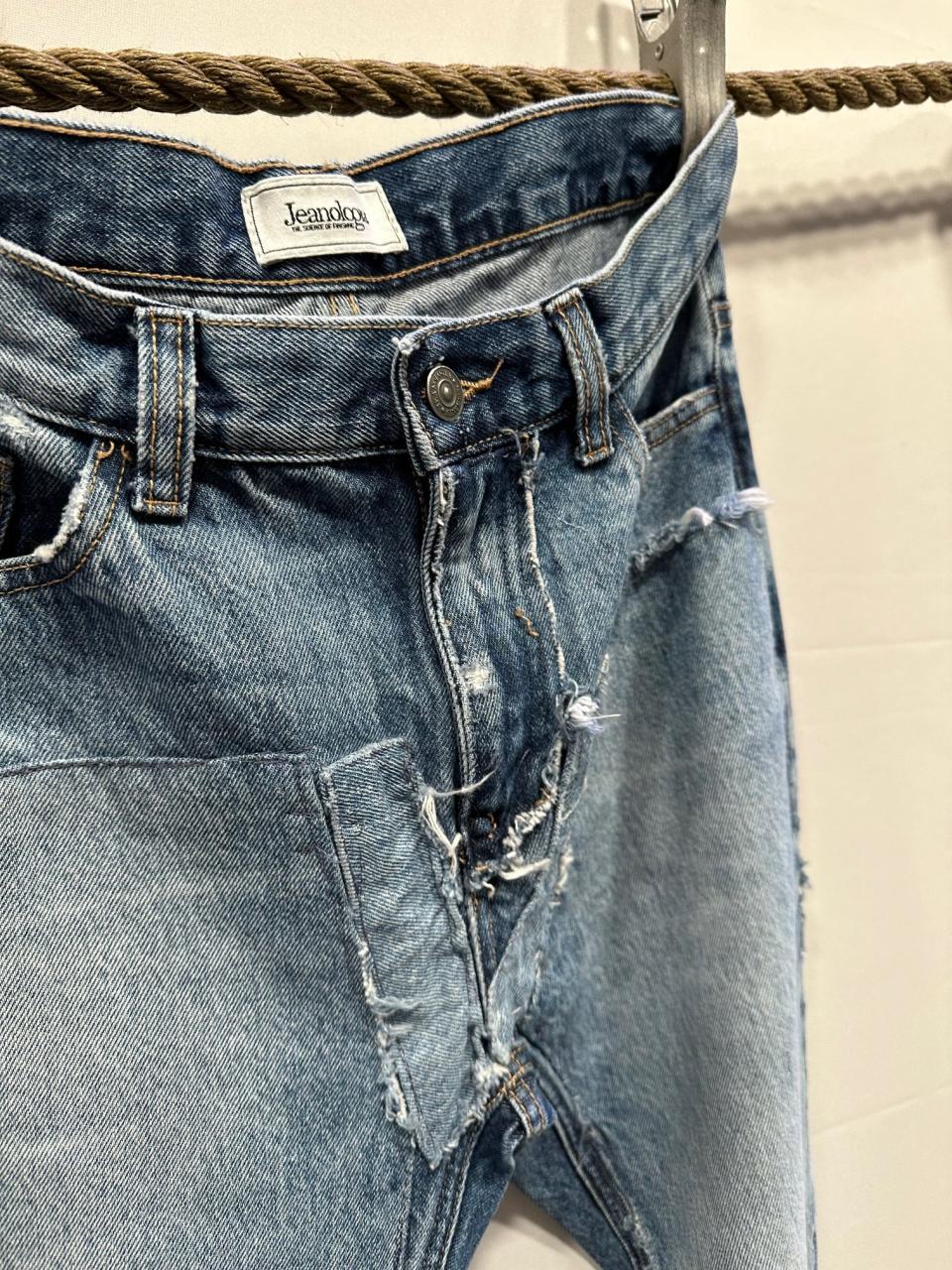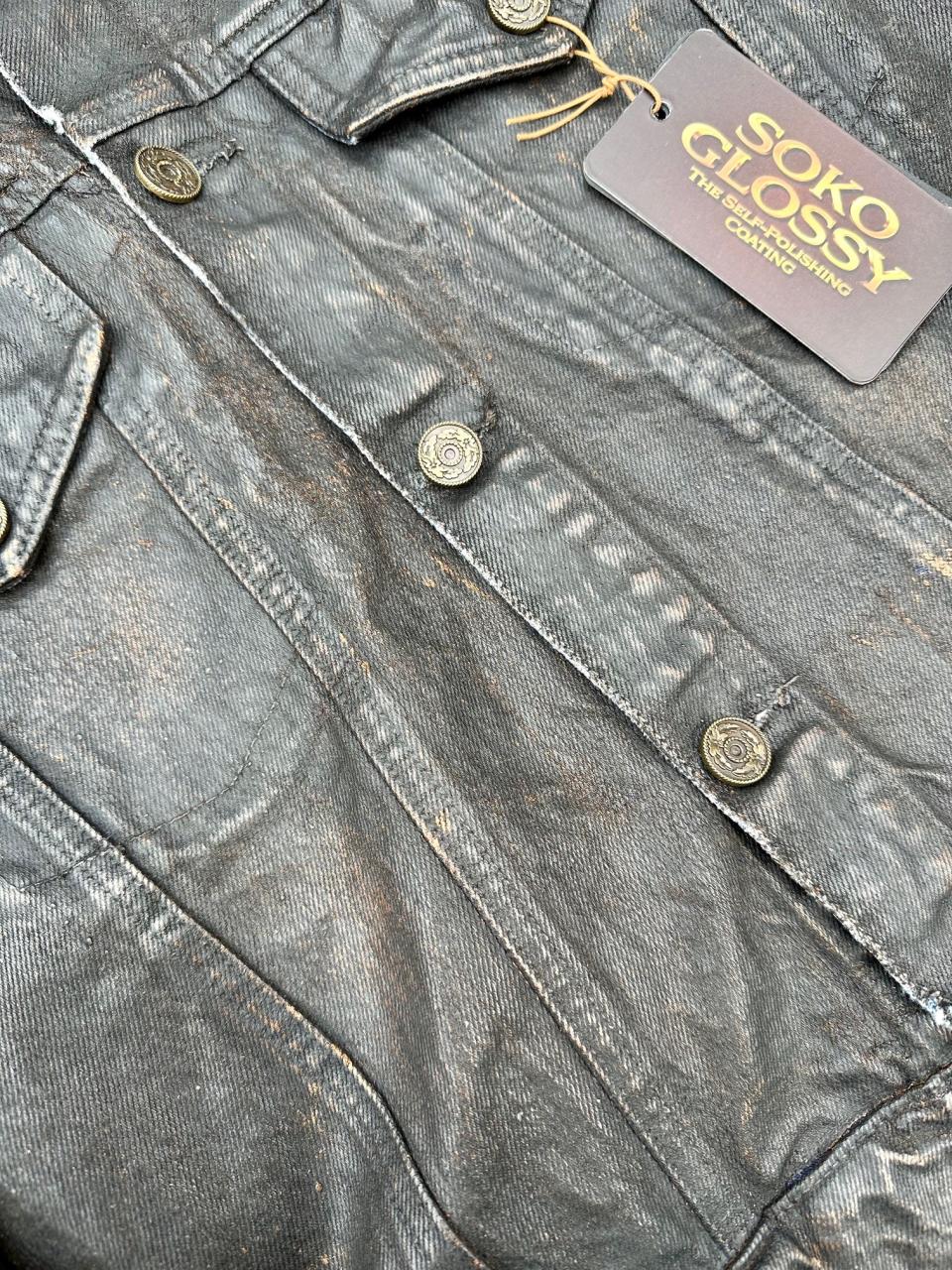Denim Chemical and Technology Suppliers Focus on Increasing Efficiency and Simplifying Processes

Chemical suppliers and finishing technology firms lead innovations for Fall/Winter 2025-2026 denim.
Though sustainability underpinned the new products they presented last week at Kingpins Amsterdam, conversations about improving efficiency, consolidating processes, and increasing agility to help brands respond faster to denim consumers’ ever-changing needs or the latest TikTok trend grew louder.
More from Sourcing Journal
Denim Dudes: Skinny Jeans, Western and Indie Sleaze Evolve for Fall/Winter 25-26
Amsterdam Awaits: Where to Eat, Shop and Chill According to Jean School Students
With Easyindigo, Italian chemical company Officina39 sets out to simplify garment dyeing with indigo.
Described as a blend of tradition and innovation, the technology requires a two-phase approach with an advanced chemical package and a partnership with Italian garment machinery company Tonello.
In phase one, indigo is pulled onto fibers by a wetting and leveling agent called Deterwet Easyindigo. The agent acts as a solubilizer, ensures reproducibility and low foaming, reducing dye migration during drying. It also involves the dispersing agent Dispersolo Easyindigo, effective for its diffusion-accelerating properties that allows for a reduction in time and temperature of the dyeing process without compromising lightfastness.
The indigo is pushed onto the fibers in the second phase using the compound Base Easyindigo and DenimBlu 30, a pre-reduced indigo by BluConnection. This chemical package is combined with Tonello’s indigo garment dyeing process technology DyeMate technology.
Tonello introduced DyeMate last spring as an efficient industrialized replacement for traditional manual indigo garment dyeing. DyeMate’s fully automated process yields repeatable results and works at low temperatures and uses fewer chemicals.
“R&D is like a marathon,” said Andrea Venier, Officina39’s managing director. “We are proud to have reached this innovation in garment dyeing. In today’s complex and challenging business environment, partnering for innovation is a strategic approach for Officina39.”
Tonello is building on its existing technologies, allowing designers to do more with dye processes they’re familiar with and trust.
At Kingpins, the company promoted DyeMate technology for sulfur black dyes in addition to indigo. Tonello also showed garments where sulfur dyes were applied to indigo to create unique red, green and black casts—a key trend in Fall/Winter 2025-2026 fabric collections. Tonello has expanded the capabilities of O Bleach to black denim as well, which Alberto Lucchin, Tonello’s marketing and sustainability manager pointed out is known to be difficult to discharge. The ozone technology achieves authentic bleach effects without chemical additives.
Tonello is also finding new purposes for its laser technology, The Laser, with Ripper Mode. The technology allows designers to create distressed effects without compromising the integrity of the fabric’s weft. The technology means brands can offer super destroyed jeans while maintaining durability.

Technology is evolving to meet consumers’ demands and the needs of new fabrics, according to Luca Braschi, Soko’s consultant and denim finishing expert.
“It is useless to continue working the same way as 20-30 years ago when we have better technology available,” he said, adding that denim fabrics nowadays are comprised of new fibers and blends that behave differently from traditional cotton denim. They need compatible chemistry.
The Italian chemical company is putting words into action with new technologies and services for Fall/Winter 2025-2026. At Kingpins, Soko promoted Lumia, a single ozone-activated product that can fade indigo denim, black sulfur denim and dyed garments without using hazardous chemicals like potassium permanganate or hypochlorite bleach. The waterless technology is applied to garments before ozone processing.
In addition to being time and resource-efficient, Lumia puts less stress on fabrics, Braschi said. Fabrics finished with the Adriano Goldschmied-approved technology are 30 percent stronger compared to fabrics finished with conventional processes.
Soko also introduced the Denim Pharmacy, a group of products that Braschi likened to different medications for various production problems including a Lycra protector and Black Magic, an efficient bleaching solution for sulfur black denim.
This solution-oriented mindset is the backbone of Soko’s new Product Division, a service to brands and designers on a project-by-project basis. “Brands need a technical partner—a shoulder a lean on—to help provide them solutions to problems whether a solution for excess fabric or how to make a product GOTS certified,” Braschi said.
Rudolf Hub 1922 is seeing demand for vendor-led innovations as well.
However, despite these resource-saving products streamlining production and opening new creative opportunities for denim brands, Alberto De Conti, managing director of Rudolf Hub 1922, said suppliers are continuing to be challenged by customers for cost-neutral innovations.
“We’re talking cents. The market is not open to a fraction of cost,” he said, adding that an “overproduction of innovation” after the pandemic is causing some “lag time” in getting products into the market.
There are some bright spots. De Conti said Rudolf is seeing order volume grow for Rucolase, a powder-based innovation that uses biodegradable micro-abrasives derived from upcycled natural waste to achieve a stonewash effect on denim. The technology is completely free from sand and silica compounds.
If established denim brands refuse to pay for innovation built for their industry, will brands in other categories cough up the cents?
Rudolf Hub 1922 leaned into the luxury sector with a collaboration with Chanel-owned FashionArt, the GOTS-certified Italian manufacturer known for its unique dyes, washes and laser finishing techniques. Together, the companies set out to create Bright Blue Beach, a capsule collection that highlights their “pioneering creativity” and the possibilities for denim beyond five-pocket jeans.

Spanning swimwear, tees, robes, jacquard backpacks, leather-trimmed totes, logo-laden beach slides, deck chairs and beach umbrellas, the elevated resort concept showcased indigo in unexpected ways.
“We believe that functional fashion should not only be responsible but also—and especially—stylish and innovative,” said De Conti. “Our collaboration with FashionArt exemplifies this belief, showcasing how science, creativity, and craftsmanship can come together to deeply redefine an industry.”
Creative Control
Spanish finishing technology company Jeanologia combined tradition and technology for Atmos Vintage, a collection that showcases one fabric for men’s jeans and one fabric for women’s jeans finished in three different ways.
It uses Jeanologia’s G2 Ozone and Indra technologies—a combination of technologies that achieves authentic vintage looks without using water, chemicals and pumice stone—and artisanal mending techniques like mending and patchwork to give jeans a personal, one-of-a-kind look.

Carmen Silla, Jeanologia’s marketing director, said the collection is an example of how brands can achieve a variety of looks with one fabric to help control inventory and weave manual processes into their industrial production.
Companies are finding a middle ground between manual and automated processes.
Soko introduced Soko Glossy, a new manual solution for coated denim with a soft hand feel. Braschi described it as a “single and simple” product that can achieve a variety of effects—ranging from plain solid colors to vintage leather looks—giving manufacturers greater versatility in the garment finishing stage.

The final effect is determined by the length of the curing process, he said, adding that the coating can be pigmented allowing designers to play with color. The manual process also allows for more creative control and localized application.
Soko also presented Soko Premium, a fixed indigo product for the type of dark washes that are typically bestsellers. The process allows brands to add the character of worn-in denim jeans while maintaining a fabric’s rich indigo look.
Beyond indigo, Officina39 expanded the color range of Recycrom Ready to Dye. The circular powder is obtained for a minimum of 65 percent recycled pre-and post-consumer textiles without chemical synthesis.
The colors were featured in a capsule collection developed in partnership with Star Fades International and Artistic Milliners. Inspired by “nature’s own processes of weathering and wear,” the garments recreate the effects of sun and water through Officina39’s technologies like Aqualess Mission, Smart Bleach, Remover IND/J-N and Oz-One Powder.
Officina39 also used Aqualess All-In-One, it’s 100 percent pumice stone replacement and water-free enzyme product, for Trustainable Vintage, a collection of garments with an authentic look. Aqualess All-In-One reduces energy consumption and the use of hazardous chemicals, leading to significant advances in water conservation.

